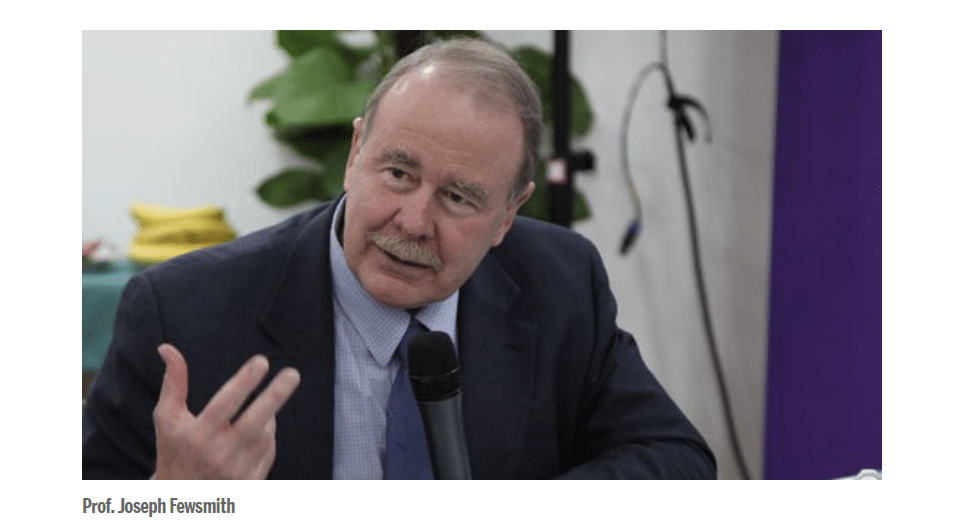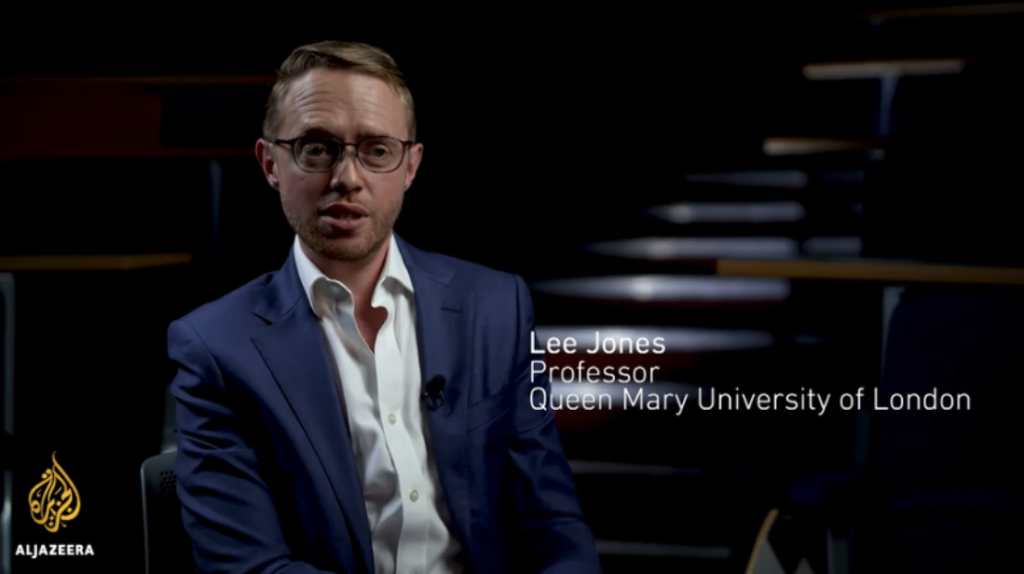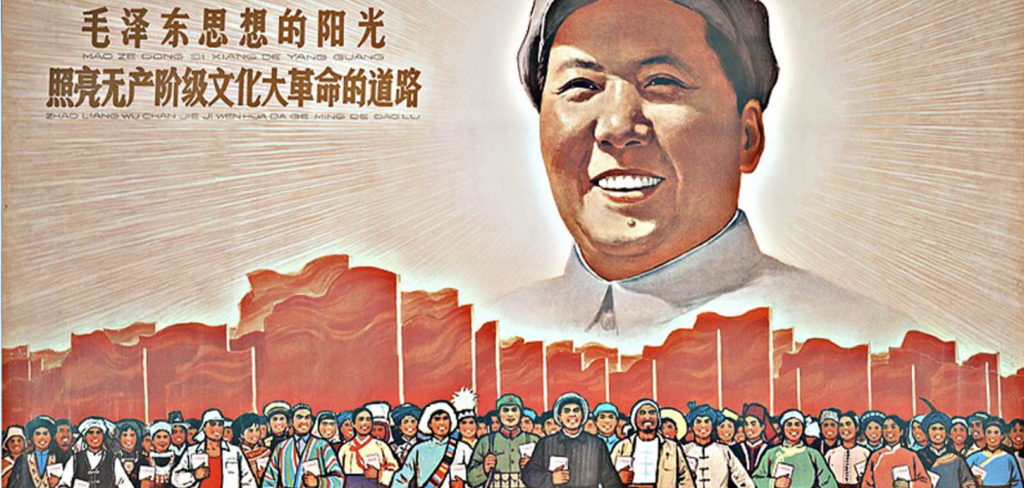Japan’s Prime Minister Takaichi Finally Says Something Close to What Beijing Wants to Hear
Factories and the Class Divide: An Interview with Marc Blecher
Professor Marc Blecher is the James Monroe Professor of Politics and of East Asian Studies at Oberlin College and was the Chair of Oberlin Department of Politics from 1991-1995 and 2016-2018. Blecher received his B.S. degree from Cornell University and his M.A. and Ph.D.from the University of Chicago. He specializes in Chinese politics and has published five books and dozens of articles on local politics, popular participation, and political economy in China. His current research focuses on the workers’ politics in contemporary China, and the political economy of urban space in small Chinese cities. Blecher was the recipient of the American Philosophical Society Fellowship (2002-2003) and the National Endowment for the Humanities Research Grants (1987,1988-89, 1995-96, 2000). His full Curriculum Vitae can be found here.
Can you tell me about yourself, your academic journey, research interest, and what you are currently working on?
As an undergraduate at Cornell, the power of the anti-Vietnam War movement shifted me off the path for which I was destined — law, business, or both, and a suburban life — toward political science focused on Asia and, especially, China, and personal life centered in a college town. I owe a special debt to Professors John Wilson Lewis and George Kahin, who taught me and wrote the book that became my bible for criticizing the war. In reaction against the focus of cold-war era studies of Asia on elites, I chose to work on the politics of ordinary Chinese — first, farmers and then, after 1995, workers.
How would you say that East Asian politics differ between countries within East Asia?
East Asian states have much higher capacity to promote development and attack their problems, which is the main reason they have been the fastest economic developers in the world over the past fifty years. The growth of the East Asian economy is due to its high capacity. In the ’50s and ’60s, China mobilized a tremendous amount of resources and poured money into industrial growth. Through the first and second five-year plans, they focused on heavy industry. After the structural reforms that began in the late 1970s, the government lifted the lid, and anyone could develop into the capitalist class as long as they had the means to produce and create wealth. It is synonymous with letting the chips fall where they may.
One area that many Chinese rising capitalists focused on was relatively low-end commodity exportation. In Japan, the state made detailed industrial plans for the country’s exportation. Japan’s METI (Ministry of Economy, Trade, and Industry) decided that Japan would have a consumer car industry, whereas China never made truly detailed plans on the type of products the country would produce or manage. In Japan and Korea, high capacity meant that the government had an iron grip on what the country would produce. However, in China, high capacity meant mobilizing domestic resources of the countryside and foreign aid into the industry. Due to the large population and earlier foreign aid from the Soviets, they could unleash the working force to create and sustain a new capitalist class. The rapid growth of China’s economy was also supplemented by the acquisition of Western technologies that expedited economic growth. Whereas in the West, the creation and development of these technologies took decades, it was readily available in East Asia. Part of China’s state capacity in aiding the natural growth of the Chinese capitalist class was figuring out how to acquire these western technologies to implement in China.
I understand that you did research on local politics and political participation in Tianjin, China in the past. What were the significant challenges as well as take-aways from the experience?
Field research hasn’t been very difficult in China, for political and logistical reasons. I’ve learned the art and craft of in-depth interviewing to provide a workable substitute to the ethnographic approach one would really prefer. I didn’t really face confrontation or conflicts while conducting my research in Tianjin. At that time, plenty of Westerners had done work in Tianjin for the late 1900s. I stayed at a foreign scholar’s guest house, and many other foreigners were teaching English and living in Tianjin. However, one challenge I faced was that I could not directly move into the Chinese neighborhoods. I couldn’t do the research I wanted to do, which was to sit in a factory for a year and work alongside other Chinese workers. I wanted to be a participant-observer. Interviews were a workable substitute. You mentioned guanxi, which actually played a big part in my ability to conduct research in China. I had a colleague located in Tianjin, which is why I picked to conduct my research there. He introduced me to workers I could interview. I brought workers to have a bowl of noodles, and I interviewed them during the meal. All this could only be possible because my colleague introduced me to these workers. Although in the end, I finally had to stop conducting interviews because I was flying under the local government’s radar. When the local government found out what I was doing, they had a chat with my colleague to prohibit the interviews. They didn’t know the specifics of the questions I was asking but forbade it anyway. So, in the end, I could do it for about three years, and I had to stop.
I picked Tianjin because it wasn’t a red-hot industrial powerhouse like Shenzhen but also not a backwater village. Tianjin was a middle-level city with constant growth, but it also didn’t have enormous wealth and the capitalist class coupled with the exploitation of workers and sweatshops. The inequality of those benefiting from the reforms and the workers wasn’t so great in Tianjin. I also didn’t go to Beijing because capital cities are different politically from the rest of the country. Beijing was mainly a political capital, while cities like Shanghai are globalized financial cities. Tianjin was an excellent middle ground within China.
How would you describe the current state of local Chinese workers and how has their working conditions and rights changed before, during, and after structural 1979 reforms?
The Chinese working class has expanded geometrically, become slightly better compensated but less economically secure, and more homogeneous (in terms of the initial cleavage between urban-born and rural migrants). Their politics has increasingly reflected the hegemony of capitalist factory relations and practices. For details of China’s labor situation, see my chapter in China’s Political Economy in the Xi Jinping Epoch: Domestic and Global Dimensions for details on the political economy side. My next book will lay out the political argument.
Regarding my time researching in China, the bulk of my worker research was conducted in Tianjin during the late 1970s up until the early 2000s. I went to the city several times and interviewed workers. During my interview with workers, the main topics were about their daily lives and focused mainly on factory life. I tried to get a sense of what it was like to work at factories, how they were organized, and how workers thought of their own work, and how they related to other workers. It was nothing politically sensitive. You can’t conduct research in China if you focus on what is deemed politically sensitive, and it isn’t a great way to conduct research. I wasn’t interested in big questions like how unhappy are you or do you resent reform policies. My research helped me get the texture of how workers coped with their daily lives and lived in their communities, how they thought about the changes, and how the changes affected them personally and their material lives.
One issue is how workers were organized on the shop floor. Instead of asking politically sensitive questions, I focused on the problems workers faced on the shop floor and the challenges of the workers adjusting to the newly formed capitalistic environment compared to the previous socialistic management. This was important because Chinese factories transitioned from a state-owned enterprise-township and village-enterprise relationship to a capitalistic environment after the structural reforms. The workers definitely felt the increased pressure from the factories to work faster. There was a lot of conversation about how different factories now had to compete with each other. It changed how bosses operated and the amount of pressure put on workers. It created more insecurities. The workers were suddenly newly concerned with whether factories would prosper or even survive. They (the workers) had questions about whether their factory management would adapt to the new pressures of a capitalistic environment since they were so used to previous socialistic management. Many workers criticized their bosses for their creativity and how entrepreneurial their bosses could be. It wasn’t that the workers were against the newly capitalistic environment. It was that they wanted their factories to succeed in the new environment. The workers thought their bosses couldn’t adapt to the changes due to the lack of an entrepreneurial mindset. Significantly few workers were critical of the structural reforms or unhappy.
There was a woman who had gotten laid off after working at a factory for decades. I asked if she was unhappy about the closing of her factory., She said that she understood that the factory was inefficient and had to close despite her long-term dedication to the factory. That was interesting, and I said, “you just got unlucky,” it’s not like you were inefficient. It was pure luck that the factory you worked in was inefficient while the factory your neighbor worked at might be doing very well. Does this make you upset? Don’t you think there is something wrong with the fact that your fate was decided based on the luck of the draw? She said, “Nope, it’s just how it is.” That’s hegemony. She believed that even though her factory closed, there were many other positive aspects of the reforms. “My kids had great jobs, Tianjin is flourishing, and we are prospering while I may have been laid off.” These were the kinds of responses I got from many other interviews, which led me to conclude that the working class is subject to the hegemony of the market and the state. The workers believed that the market’s rise may undermine some workers but ultimately accepted that China could grow under this new capitalistic market.
China is comprised of wealthy cosmopolitan cities as well as poor rural industrial cities. How are the working conditions, rights, as well as autonomy of Chinese workers different between the two types of cities?
Labor conditions and compensation are a bit better in the more prosperous cities, but only because the cost of living is higher there. After all, the prosperity of those cities and their upper classes depend on the poverty of their working class. Politically, workers lack rights and autonomy in both.
China is a one-party socialist country led by Xi Jinping and the Communist party while the United States is a federal democratic republic. How do the two forms of government affect the treatment, rights, and conditions of working class citizens in each respective country?
Chinese workers lack independent unions and enforceable political and economic rights, though of course, these have also been weakened a great deal in the U.S. in the past four decades. So working classes in both have suffered compared with their positions in the 1950s through 1970s, when their relative economic, social and political positions were higher (though in very different ways for very different reasons).
In China, the worsening of rights and treatment of workers in recent years is a form of China’s state capacity. In the Maoist era, the state set the wages for the workers and allocated labor. There was a massive ministry of labor that would dictate the job you would get and popularize the role of workers in society. Workers would earn a high social status and be treated very well. The government exalted them politically and socially. I have an anecdote about a guy who went to an elite high school in China. Upon graduating, he had a chance to go to University or the factory, and he chose the factory in a heartbeat. He stated that workers were considered to have very high social status, and the pursuit of further education would not benefit him more than wage labor.
However, starting in the ’80s, the Chinese government stopped giving welfare guarantees and encouraged people to study instead of work. Through the utilization of state capacity, China changed the status and material hierarchy, and people followed suit. Keep in mind that China still needed workers and wage laborers, but the government wanted to encourage people to become educated and entrepreneurial. The most tremendous increase of proletarianization was in China in the ’80s and ’90s when 200 million farmers became migrant workers. Due to the large labor force, the Chinese government encouraged people to pursue education and still had plenty of workers to work in the factories.
In the case of American workers, their worsening frights and treatment are both political and economic. Economically, it is true that specific jobs were exported, and cities like Detroit suffered due to Japanese and German car exportation. Increased international competition shut down factories and displaced workers. Politically, Republicans and sometimes Democrats would attack and actively undermine union’s legal and administrative rights while passing new legislation that made it more difficult to organize unions and strikes.
Oberlin was actually a prominent center for this. Under the Reagan administration, the federal government declared war against labor unions and broke a strike caused by air traffic controllers in Oberlin. Labor unions decreased from a third of the total American working force to approximately ten or twelve percent through the Reagan administration. Through the combination of economic and political attacks against unions, the participation and strength of these unions diminished over time. Particularly, the reason for the air traffic control strike was due to the investment of equipment. These workers believed that technology and equipment investment was necessary to perform their jobs. Still, the federal government was then going through a fiscal crisis, starting in the ’70s, and couldn’t allocate the money to invest in new equipment. The air traffic controllers union thought they could win due to the complexity of air traffic control and the detrimental impact that the strike would cause for airlines. The government broke the strike by bringing in supervisors, military air traffic controllers, and appealing to workers that did not participate in the unions.
When comparing how American workers lost their social and economic status compared to Chinese workers, the reason behind the worsening of treatment happened for very different reasons. Interestingly, the United States media then turned around and blamed China for deteriorating worker rights and unions. So many workers started blaming their situation on the Chinese instead of the government crisis or party attacks on unions and worker privileges. I remember driving my Volkswagen to Elyria, and there would be people protesting in the streets who would scream and yell at us for driving a foreign car. I should clarify that the hatred of laid-off American workers wasn’t necessarily directed towards China. China did not export cars to the United States. It was mainly Japan and Germany, but the generalization of this blame resulted in the antagonism of foreigners in the United States. Later they came to blame China for exporting medium value-added industrially manufactured products like washing machines or car components.
Trade agreements and rights is an area of contention between China and the United States, further exacerbated by recent events. How has the “trade war” between the two countries affected Chinese workers currently and in the future?
Not much. In the days of advancing US-China relations of the 1990s and 2000s, American workers suffered from export of manufacturing and its jobs (though, actually, a bigger source of their decline was technological advance and the broad attack on unions, which fewer people discuss because it’s easier to blame China). The “trade war” has not bitten significantly, despite all the political hype, because capital on both sides needs continuing trade. (Investment in both directions has become harder, though.) Overall, maintaining a good relationship between the two countries is necessary since the economy of both countries are tied up together.
Minjun Hong is a senior studying at Oberlin College majoring in Economics and Politics. He spent the first eighteen years of his life in Asia before coming to the United States in pursuit of higher education. He is a native trilingual with a passion for East Asian political economy as well as current US-China relations. In his free time, he enjoys swimming, volunteering, and hiking in Rattlesnake Ridge.









